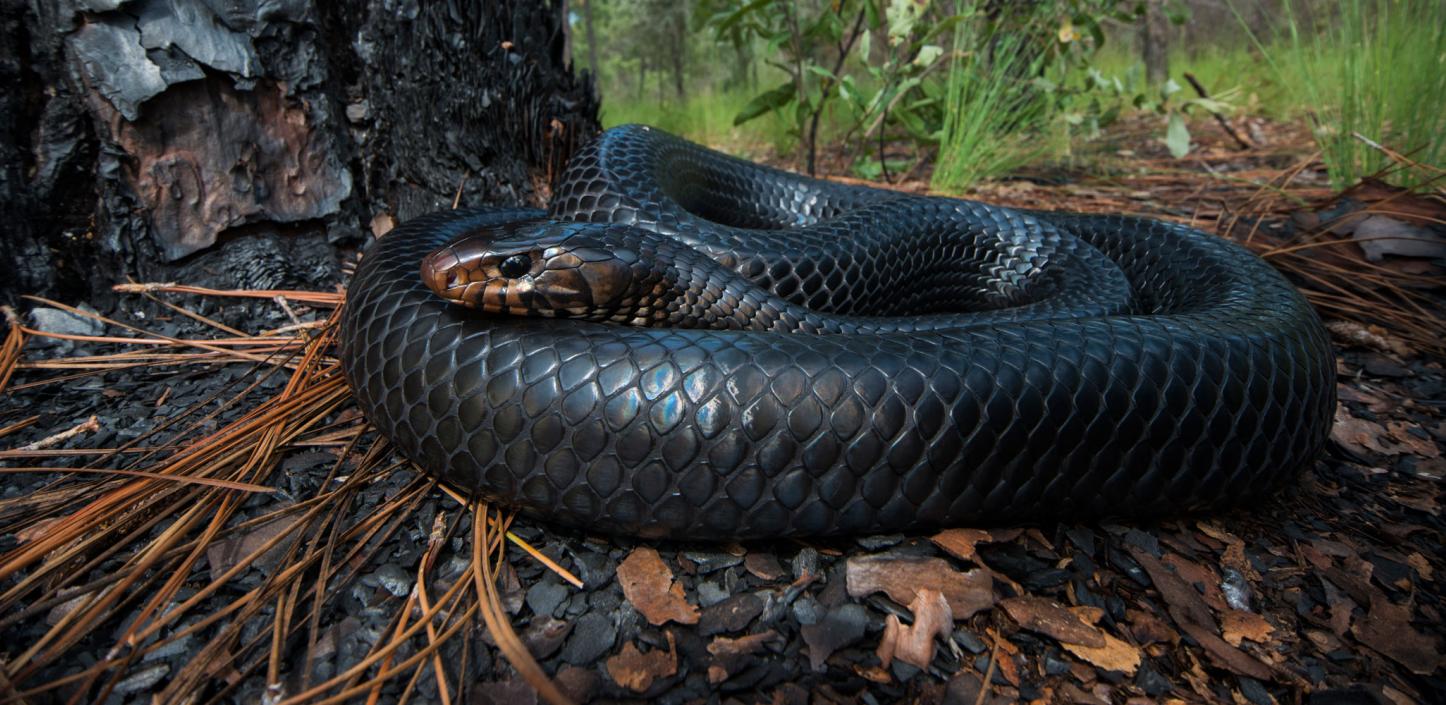
Eastern Indigo Snakes Return to Forests
The eastern indigo snake owes its scientific name, Drymarchon couperi, to a Greek phrase meaning “lord of the forest.” It’s a fitting description.
These majestic reptiles sport jet-black scales that shine with a blue iridescence. They grow to more than 9 feet in length, making them North America’s longest native snake. Indigos are nonvenomous, posing no threat to people, but they will take on just about any potential prey they run across, including venomous rattlesnakes and copperheads.
Indigos once flourished throughout the longleaf pine forests of Florida, Georgia, Alabama and eastern Mississippi, but their numbers have fallen so low that the species is listed as “threatened” under the U.S. Endangered Species Act.
But now, thanks in large part to decades of conservation efforts focused on the longleaf pine ecosystem in Southern states, the eastern indigo seems poised to once again rule the piney woods.
The species got a helping hand last July in the Florida Panhandle, when a diverse group of conservation partners gathered at The Nature Conservancy’s Apalachicola Bluffs and Ravines Preserve to release 12 eastern indigo snakes, eight males and four females. Largely eliminated from northern Florida due to habitat loss and fragmentation, the indigo was last observed at the preserve in 1982.
The release of the reptiles, which were raised at Central Florida Zoo’s Orianne Center for Indigo Conservation, represents a significant milestone in NFWF’s 14-year history of support for longleaf conservation on public and private lands. The Foundation has invested more than $2.6 million into efforts to restore and enhance longleaf forests in and around the preserve. NFWF also directly supports the 10-year effort to reintroduce eastern indigos to northern Florida.
“You can’t have indigos without first providing a home and plenty of groceries to eat,” David Printiss of the North Florida Program of The Nature Conservancy said. “This is one of the reasons we are so proud of this project; reintroducing these snakes could only have happened after years of efforts to restore these areas back to health.”
NFWF marked another important milestone in 2017, surpassing 1 million acres of longleaf restored, enhanced or protected through its Longleaf Stewardship Fund and related programs. Since 2012, the fund has invested more than $24.1 million in projects to support the restoration of the longleaf ecosystem throughout the South.
Contributing Partners: Altria Group, International Paper's Forestland Stewards Partnership, Southern Company American Forest Foundation, The Moore Charitable Foundation, U.S. Department of Defense, U.S. Fish and Wildlife Service, U.S. Forest Service, USDA's Natural Resources Conservation Service
Contact: Matt Winter 202-857-0166